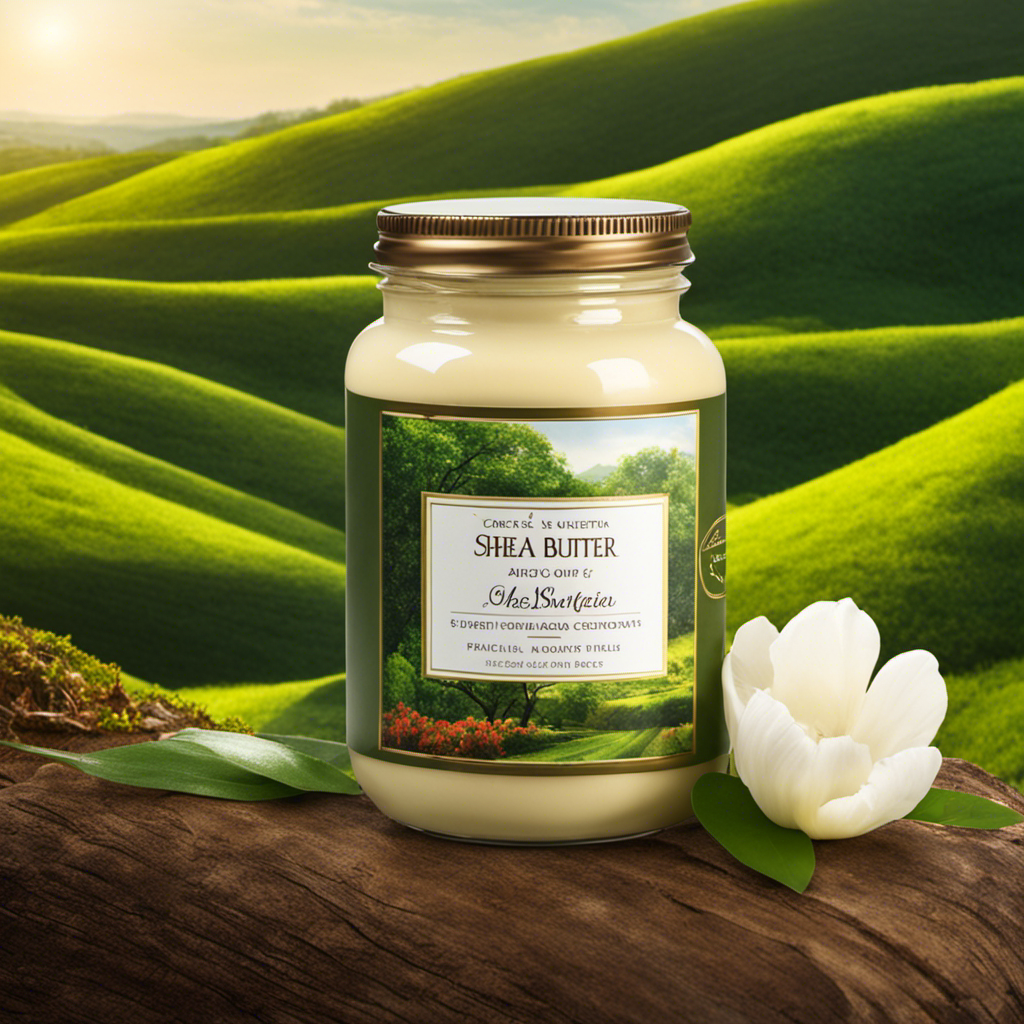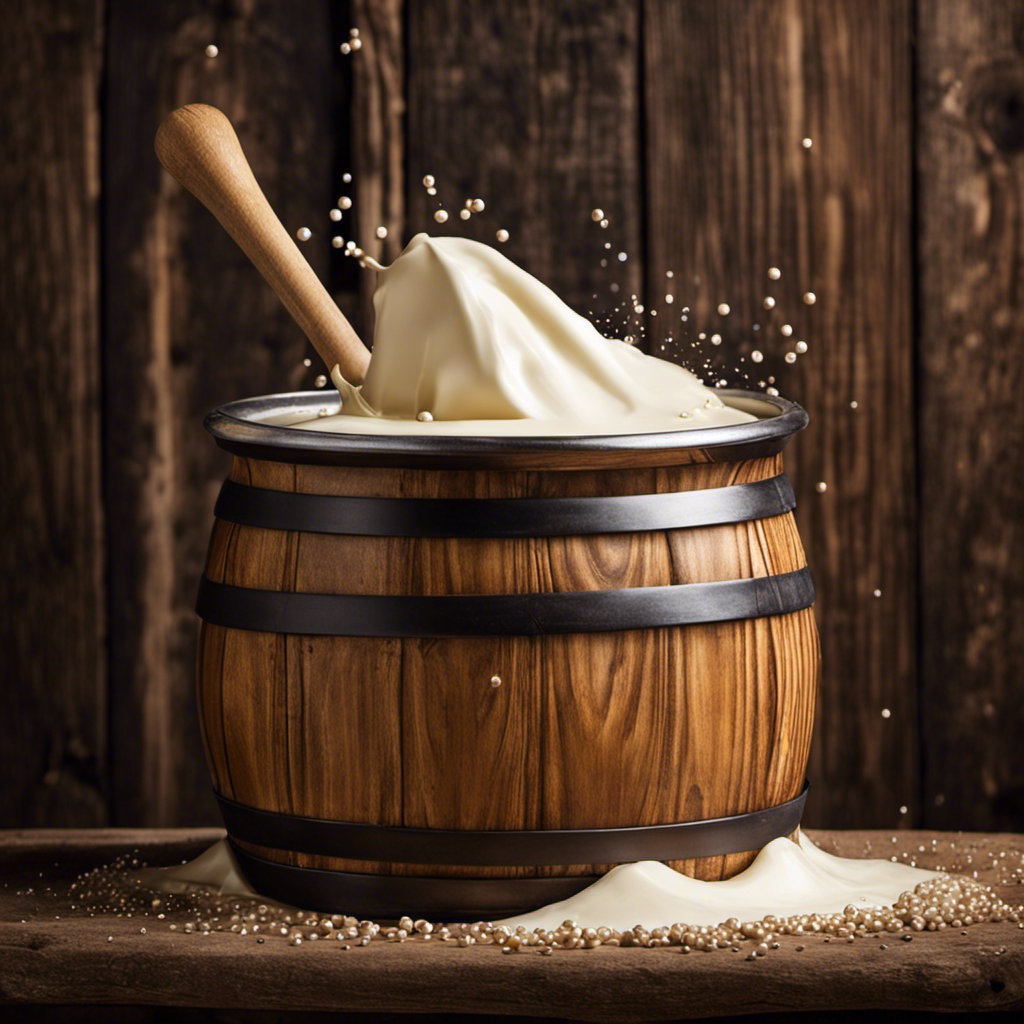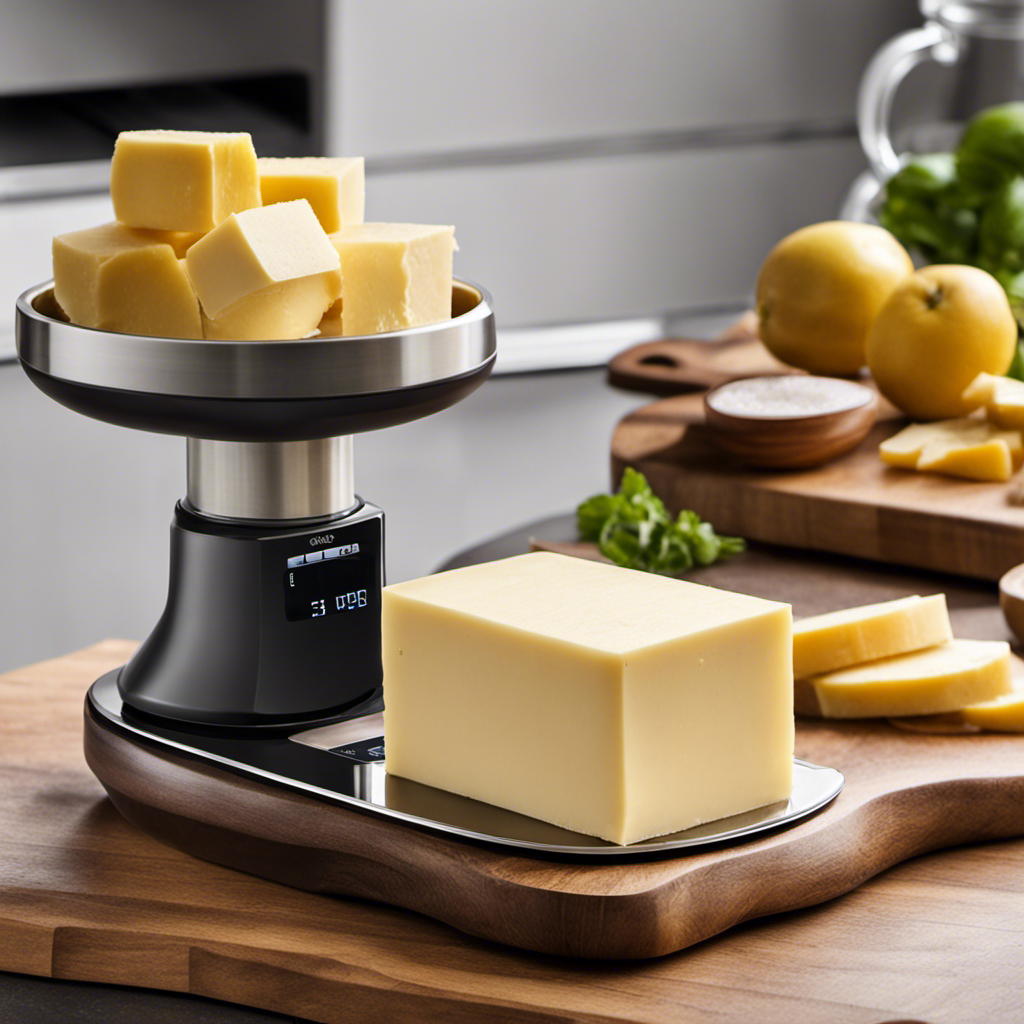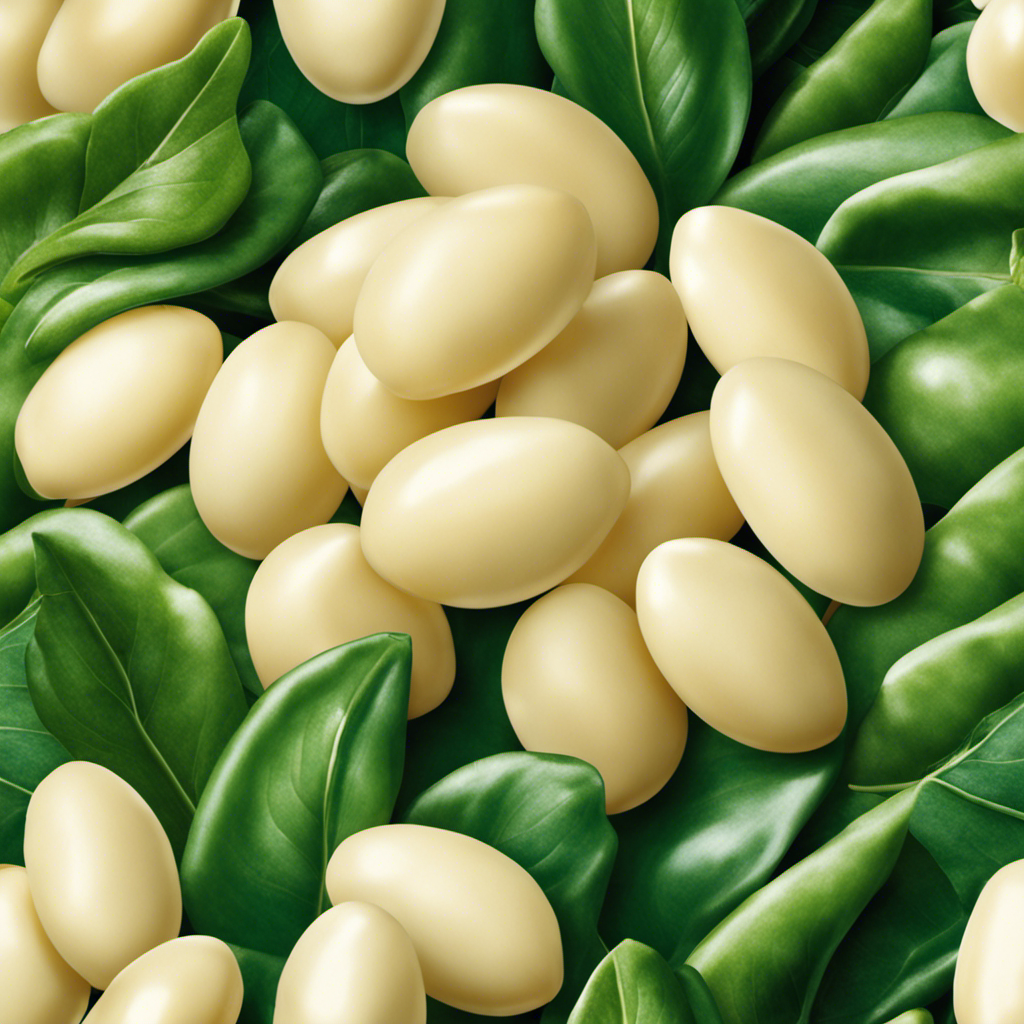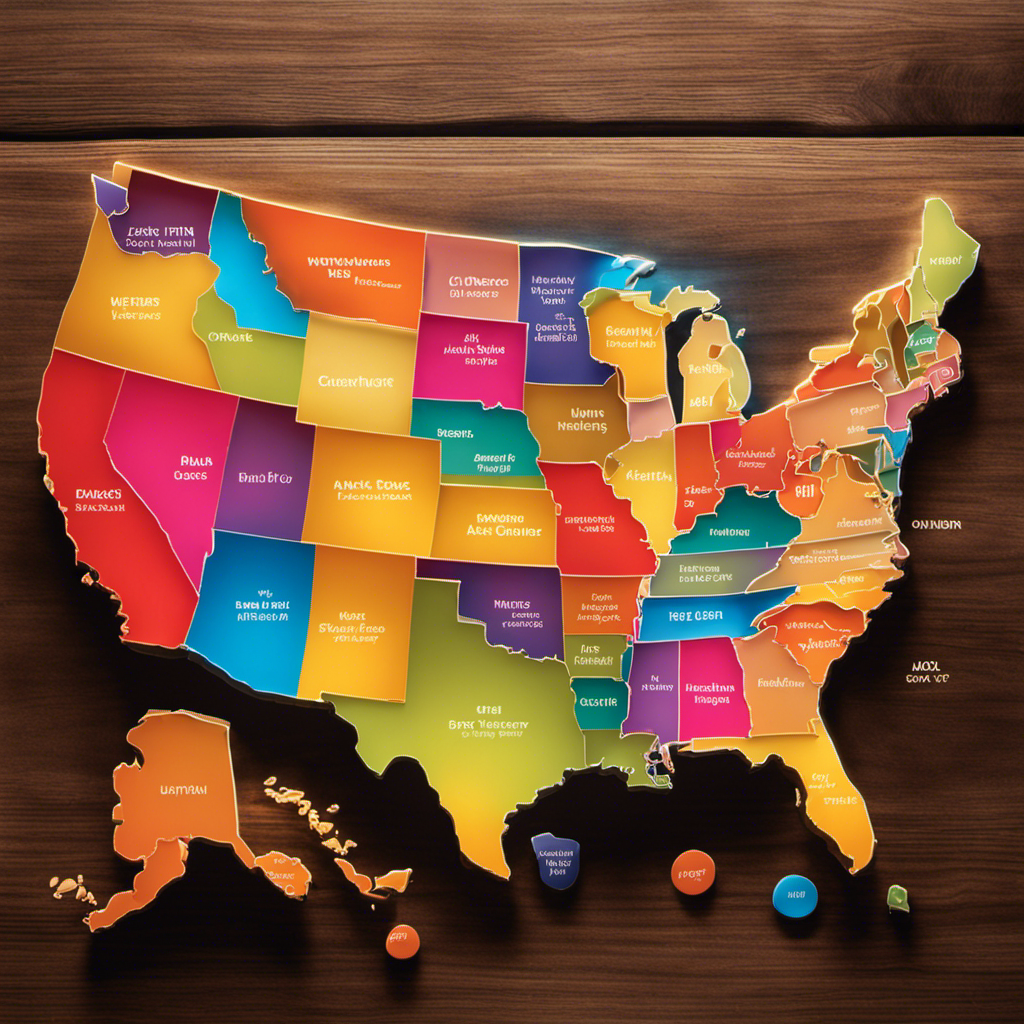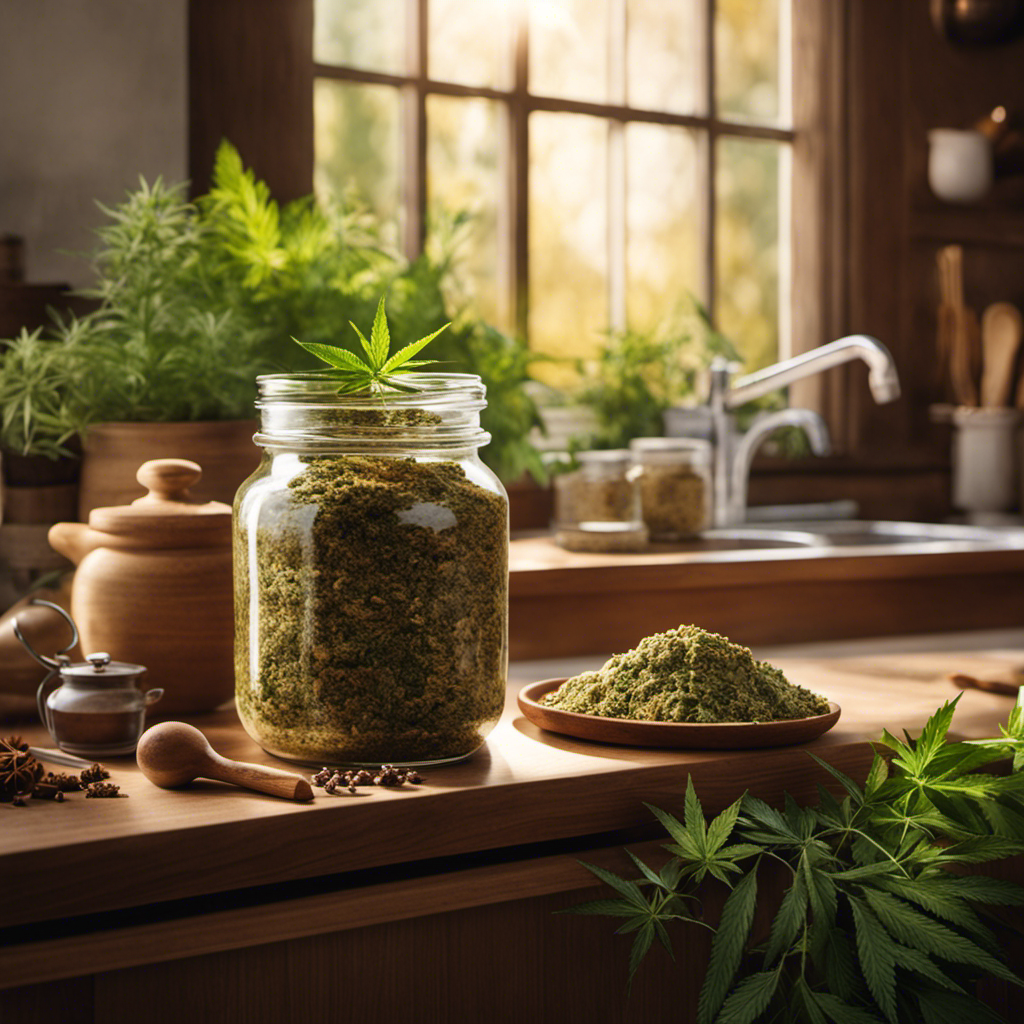As someone passionate about skincare, I frequently ponder over the shelf life of my favorite shea butter. Given its creamy consistency and beneficial attributes, it’s an essential part of my skincare regimen. However, I’m curious about the duration of its potency.
In this article, we’ll explore the factors that affect shea butter’s shelf life and discover the secrets to maximizing its longevity. From storage tips to understanding expiration dates, we’ll delve into the world of shea butter preservation.
So, let’s dive in and uncover the secrets behind the lifespan of this miraculous beauty ingredient.
Key Takeaways
- Exposure to heat and light can reduce the shelf life of shea butter.
- Storing shea butter in a cool, dark place in a sealed container helps preserve its quality.
- Airtight containers prevent air exposure and moisture, extending the lifespan of shea butter.
- Shea butter can last up to two years when stored properly.
Factors Affecting Shea Butter Shelf Life
One of the factors that affect shea butter shelf life is exposure to heat and light. Unlike other natural butters, such as cocoa butter or mango butter, shea butter has a relatively long shelf life. When stored properly, it can last for up to two years.
However, improper storage can significantly reduce its lifespan. One common mistake is leaving shea butter exposed to direct sunlight or high temperatures. This exposure can cause the butter to melt, lose its beneficial properties, and develop an unpleasant odor.
To ensure its longevity, it is important to store shea butter in a cool, dark place, preferably in a tightly sealed container. This will help protect it from heat and light, preserving its quality and effectiveness for a longer period of time.
Shelf Life of Raw Shea Butter
When it comes to the shelf life of raw shea butter, there are several factors that can affect its longevity. Understanding these factors is crucial in maintaining the quality and effectiveness of the product.
In addition to this, proper storage techniques play a significant role in preserving the shea butter for an extended period.
Factors Affecting Shelf Life
Factors like temperature and exposure to air can affect how long shea butter lasts. Proper storage is crucial to maintain its quality and extend its shelf life. Here are some key factors and best practices for shea butter storage:
-
Temperature:
-
Keep shea butter in a cool, dry place away from direct sunlight.
-
Avoid extreme temperature fluctuations, as they can cause the butter to melt or solidify.
-
Exposure to air:
-
Store shea butter in airtight containers to prevent oxidation and rancidity.
-
Avoid frequently opening and closing the container, as it introduces air and moisture.
By following these best practices, you can ensure that your shea butter remains fresh and of high quality for a longer period.
Remember to check the expiration date, if applicable, and discard any shea butter that shows signs of spoilage or an off smell.
Proper Storage Techniques
To maintain the quality and extend the shelf life of your shea butter, it’s important to store it in a cool, dry place away from direct sunlight. Proper storage techniques are crucial in ensuring that your shea butter remains fresh and usable for as long as possible.
When exposed to heat and sunlight, shea butter can degrade and lose its beneficial properties. Therefore, it is recommended to store it in an airtight container in a cool and dark area, such as a pantry or a cupboard. Avoid storing it in the bathroom or near any sources of heat, as the fluctuating temperatures can affect its stability.
How Long Does Unrefined Shea Butter Last
Unrefined shea butter typically lasts for about 1-2 years when stored properly. It is important to understand the shelf life of shea butter products and the best practices for storing them to ensure their longevity.
Here are some key points to consider:
- Keep shea butter in a cool and dry place, away from direct sunlight and high temperatures.
- Use airtight containers or jars to prevent exposure to air and moisture. This will help preserve its natural properties and prevent it from becoming rancid.
- Avoid storing shea butter in the bathroom, as the humidity can degrade its quality.
By following these guidelines, you can maximize the shelf life of your shea butter and enjoy its benefits for longer.
However, there are additional storage tips for extending shea butter’s lifespan that can further enhance its longevity and effectiveness.
Storage Tips for Extending Shea Butter’s Lifespan
Storing unrefined shea butter in a cool and dry place, away from direct sunlight and high temperatures, can help extend its lifespan. Proper storage is essential for shelf life preservation and maximizing longevity.
When exposed to heat and sunlight, shea butter can melt and lose its beneficial properties. It is recommended to store it in airtight containers to prevent any exposure to air, which can cause oxidation and spoilage. Additionally, keeping it away from moisture is crucial as it can lead to mold growth.
It is best to avoid storing shea butter in the bathroom or near a sink where it can come into contact with water. By following these storage tips, you can ensure that your shea butter remains fresh and effective for a longer period of time.
Understanding the Expiration Date of Shea Butter Products
When it comes to using skincare products, it’s important to understand the shelf life guidelines, safety, and storage recommendations.
Knowing how long a product can be safely used can help prevent any adverse reactions or ineffectiveness.
Additionally, understanding the proper storage techniques can help prolong the shelf life of the product, ensuring you get the most out of your investment.
Shelf Life Guidelines
Shea butter can typically last for up to two years if stored properly. However, several factors can affect its shelf life.
Here are some best practices for storing shea butter:
-
Temperature:
-
Keep shea butter in a cool, dry place away from direct sunlight and heat sources.
-
Avoid exposing it to extreme temperature fluctuations.
-
Packaging:
-
Choose airtight containers or jars to prevent air and moisture from entering.
-
Make sure the container is clean and dry before transferring the shea butter.
-
Handling:
-
Always use clean, dry hands or a spoon to scoop out the desired amount.
-
Avoid introducing water or other contaminants into the container.
Safe to Use
It’s important to check for any signs of mold or a rancid smell before using shea butter. Ensuring safe usage of shea butter is crucial, as it can have potential side effects if not used properly.
When using shea butter, it’s essential to examine its appearance and smell. Look for any discoloration, spots, or unusual texture, as these could indicate mold or spoilage. A rancid smell is also a clear sign that the shea butter is no longer safe to use.
Potential side effects of using spoiled shea butter include skin irritation, rashes, and even bacterial or fungal infections. To avoid these issues, always store shea butter properly in a cool, dark place and check for any signs of deterioration before using it on your skin.
Storage Recommendations?
To ensure the longevity of your shea butter, make sure to store it in a cool, dark place. Proper storage temperature is crucial in maintaining its quality and effectiveness. Here are some key points to consider for storing your shea butter:
-
Temperature: Store shea butter at a temperature between 50-70°F (10-21°C). Avoid extreme heat or cold as it can affect its texture and consistency.
-
Light: Keep shea butter away from direct sunlight or bright artificial light. Exposure to light can cause the butter to deteriorate and lose its beneficial properties.
When it comes to containers, choose ones that are airtight and opaque to prevent air and light from reaching the shea butter. The best containers for storing shea butter include:
-
Glass jars with tight-fitting lids: Glass is non-reactive and provides a good barrier against light and air.
-
Tin or aluminum containers: These materials are also effective in protecting the shea butter from light and air exposure.
By following these storage recommendations, you can ensure that your shea butter stays fresh and potent for a longer period.
Now let’s explore how long refined shea butter can last.
How Long Does Refined Shea Butter Last
Refined shea butter typically lasts for about two years when stored properly. However, there are a few factors that can affect its shelf life. Exposure to heat, light, and air can cause the butter to spoil more quickly. To extend the shelf life of shea butter, it is important to store it in a cool, dark place, away from direct sunlight and heat sources. Additionally, keeping the container tightly sealed can help prevent air from getting in and oxidizing the butter.
Here is a table highlighting some tips on how to extend the shelf life of refined shea butter:
| Tips to Extend Shelf Life of Shea Butter |
|---|
| Store in a cool, dark place |
| Keep away from direct sunlight and heat |
| Seal the container tightly |
| Avoid exposure to air |
| Check for signs of spoilage regularly |
Does Shea Butter Expire
When it comes to the shelf life of shea butter, it’s important to understand that it does have an expiration date. Generally, unrefined shea butter has a shelf life of about 1-2 years, while refined shea butter can last up to 2-3 years.
To ensure the longevity of your shea butter, it’s crucial to store it properly. Keep it in a cool, dark place away from direct sunlight and extreme temperatures, and make sure to seal it tightly after each use to prevent air exposure.
Shelf Life of Shea
The shelf life of shea butter depends on various factors, such as storage conditions and whether it is unrefined or not. There are several factors that can impact the quality of shea butter and ultimately affect its shelf life:
-
Storage Conditions:
-
Temperature: Extreme heat or cold can degrade the quality of shea butter. It is best to store it in a cool, dry place.
-
Exposure to Light: Keeping shea butter away from direct sunlight can help preserve its properties and extend its shelf life.
-
Unrefined vs. Refined:
-
Unrefined shea butter typically has a shorter shelf life due to its natural state and higher fat content. Refined shea butter, on the other hand, may have a longer shelf life due to the processing it goes through.
Extending the shelf life of shea butter can also be achieved through proper packaging. Using airtight containers or packaging with a protective barrier can help prevent oxidation and maintain its quality for a longer period of time.
Storage Tips for Shea
To keep your shea butter fresh and extend its shelf life, store it in a cool, dry place away from direct sunlight. This will help preserve its natural properties and prevent it from spoiling. It is also important to choose the right storage container for your shea butter. Opt for opaque or dark-colored containers to block out light and keep the butter from oxidizing. Additionally, make sure the container has a tight-fitting lid to prevent air from entering and causing the butter to go rancid. The best temperature for shea butter storage is between 50°F and 70°F (10°C and 21°C). Extreme temperatures, both hot and cold, can affect the texture and quality of the butter. By following these storage tips, you can ensure that your shea butter stays fresh and usable for a longer period of time.
| Storage Containers | Best Temperature |
|---|---|
| Opaque or dark-colored containers | 50°F to 70°F (10°C to 21°C) |
| Tight-fitting lids |
Signs of Spoiled Shea Butter
You’ll want to watch out for any changes in color, texture, or smell that could indicate spoiled shea butter. Here are some key signs of rancid shea butter and how to tell if it’s spoiled:
-
Color: Fresh shea butter is usually a creamy yellow color. If it starts turning brown or develops dark spots, it may be spoiled.
-
Texture: Spoiled shea butter may become grainy or lumpy. It might also feel greasy or sticky to the touch.
-
Smell: Shea butter has a natural nutty scent. However, if it starts smelling off or has a rancid, sour odor, it’s likely gone bad.
Remember that proper storage is crucial to prevent shea butter from spoiling. Keep it in a cool, dry place away from direct sunlight and moisture. If you notice any of these signs, it’s best to discard the shea butter to avoid any potential skin irritations or infections.
How to Properly Store Shea Butter to Maximize Its Shelf Life
Now that we know the signs of spoiled shea butter, let’s talk about how to properly store it to maximize its shelf life.
The key to preserving the freshness and quality of shea butter is to protect it from air, heat, and light. The best containers for storing shea butter are dark-colored glass jars or containers made of food-grade plastic. These containers help block out light and keep the shea butter from being exposed to harmful UV rays.
It is also essential to store shea butter in a cool, dry place, away from direct sunlight and heat sources. If stored correctly, shea butter can last for up to two years.
To tell if shea butter has gone bad, look for changes in color, texture, or smell. If it has a rancid odor or a yellowish or grayish color, it’s time to throw it away and get a fresh batch.
Does the Quality of Shea Butter Affect Its Longevity
If you want your shea butter to have a longer shelf life, it’s important to consider the quality of the product. The quality of shea butter can greatly affect its longevity and effectiveness. Here are some key factors to consider:
-
Effect of temperature:
-
Storing shea butter at high temperatures can cause it to melt and lose its beneficial properties.
-
Extreme temperature fluctuations can also affect the consistency and texture of the butter.
-
Impact of packaging:
-
Choosing the right packaging is crucial in preserving the quality of shea butter.
-
Airtight containers, such as glass jars or aluminum tins, can help protect the butter from exposure to air and moisture, which can cause it to spoil or become rancid.
Shea Butter Preservation Techniques and Tips
Understanding proper storage techniques and using suitable packaging can significantly extend the shelf life and maintain the effectiveness of shea butter.
To increase shea butter’s shelf life, it is important to store it in a cool, dry place away from direct sunlight and heat sources. Exposure to high temperatures can cause the butter to melt and lose its beneficial properties.
Additionally, using airtight containers or jars can prevent air and moisture from getting in, preserving the butter’s quality for a longer period.
It is also recommended to avoid using wet or dirty hands when scooping out shea butter, as this can introduce bacteria and reduce its shelf life.
Frequently Asked Questions
Can I Use Shea Butter Past Its Expiration Date?
Yes, you can use shea butter past its expiration date. Although it may not be as effective, it can still provide some benefits. The texture may change, but it can still moisturize and nourish the skin.
Can I Use Shea Butter That Has Changed in Color or Consistency?
Yes, you can still use shea butter that has changed in color or consistency. It may not affect its benefits for different skin types. Raw shea butter is known for its nourishing properties and can be a great addition to your skincare routine.
Is It Safe to Use Shea Butter That Has a Rancid Smell?
Using rancid shea butter can pose risks to your skin, such as irritation or infection. It is important to take precautions and avoid using it. Instead, opt for fresh shea butter which offers numerous benefits for your skin.
Can I Store Shea Butter in the Refrigerator to Extend Its Shelf Life?
Storing shea butter in the refrigerator doesn’t affect its quality. It can be safely stored there to extend its shelf life. However, storing it in the freezer for long term preservation may alter its texture.
Can I Mix Shea Butter With Other Oils or Ingredients to Increase Its Longevity?
Mixing shea butter with other oils for enhanced benefits is a great way to preserve its effectiveness. By combining ingredients, you can increase its longevity and enjoy the nourishing properties for a longer period of time.
Conclusion
In conclusion, it’s important to store shea butter properly to extend its shelf life and maintain its quality.
As I have discovered through my research, factors such as exposure to light, temperature, and air can all affect the longevity of shea butter.
Just like a delicate flower needs the right conditions to bloom and thrive, shea butter requires a similar level of care and attention.
By following the storage tips and preservation techniques mentioned, you can ensure that your shea butter lasts for a long time, providing you with its wonderful benefits whenever you need them.
